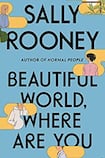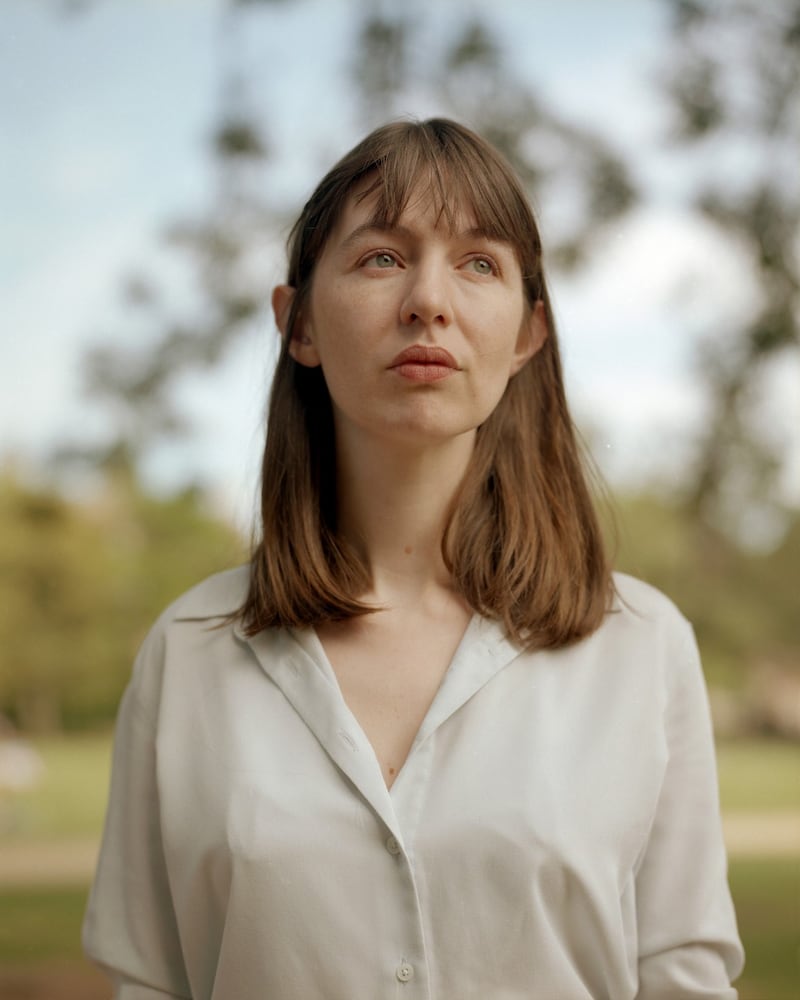
Sally Rooney is regarded, not without reason, as the novelist who best expresses the lives of those born into the western middle class in the 1990s. But she has written, in Beautiful World, Where Are You, a 19th-century novel. It is, paradoxically, a bold choice. Nothing, for her, could be less safe.
Her title comes from a Friedrich Schiller poem set to music by Franz Schubert in 1819. The novel itself refers back to Leo Tolstoy in the way it combines the small world of love and intimacy with the large one of politics and ideas, putting the extremely private side by side with the very public.
One strand of it could be plucked from Jane Austen in the way the characters struggle to interpret each other’s desires and in its shape as a good old-fashioned marriage plot. Henry James is a ghostly presence. Rooney, hailed as the voice of the young, is very deliberately placing herself in venerable company.
Sally Rooney takes the very considerable risk of allowing the experiences of her character Alice to mirror, in career terms, her own. Alice is a young writer deeply unhappy about waking one morning to find herself an international literary star
For another writer, all of this might amount to an exercise in literary nostalgia or insupportable hubris. But what makes it so intriguing here is that Rooney’s characters are emphatically not Isabel Archer or Elizabeth Bennett.
They are, like Rooney herself, turning 30. They live in a very 21st-century world of precarious employment, rampant consumerism, inadequate housing, fluid sexuality, social-media saturation, instant celebrity and the existential dread of the climate crisis.
But Rooney is not content to be contemporary. She is asking throughout the novel: what does contemporary mean? Is there even such a thing as “now”? Can this present moment express itself in anything other than a free-floating purposelessness, a slow descent into civilisational collapse?
In one of the long discursive emails between them that shape the book’s intellectual architecture, Eileen, who works as a badly paid editor for a Dublin literary magazine, suggests to her friend Alice, a hypersuccessful novelist, that “our political vocabulary has decayed so deeply and rapidly since the twentieth century that most attempts to make sense of our present historical moment turn out to be essentially gibberish”.
But Alice seems to suspect that this may be true not just of political vocabulary but of the novel itself. She is deeply unhappy about her own Byronic experience of waking one morning to find herself an international literary star.
Rooney takes the very considerable risk of allowing Alice’s experiences to mirror, in career terms, her own. She “signed an American book deal for two hundred and fifty thousand dollars” when she was 24. She has published two novels. She jets off to Rome for interviews and readings. People who meet her for the first time Google her name for all the gossip.
The obvious risk is that of a 'poor me' solipsism. But Rooney counters it with a passionate and searching inquiry into the connection between the problem of writing and the problem of living. What form can the experience – economic, sexual, historical, political – of her generation take?
She can’t bear it. She is filled with self-contempt: “I keep encountering this person, who is myself, and I hate her with all my energy.” This disgust seeps into her sense of her own novels: “I find my own work morally and politically worthless.”
The obvious risk here is that of a “poor me” solipsism. But Rooney counters it with a passionate and searching inquiry into the connection between the problem of writing and the problem of living. In both guises, the question is the same: what form can the experience – economic, sexual, historical, political – of her generation take?
This is what connects the book so strongly to the writers of the Enlightenment and of the 19th century. Faced with the disruptions of an emerging modernity, this was their primary question.
Now, faced with the disruptions attendant on the end of that modernity, Rooney asks it again. Her answer, intriguingly, is that perhaps there are no new forms – of writing, of personal connection, of belief in something that gives meaning to the world. Perhaps there is nothing for it but to reoccupy the old ones with renewed vigour.
This argument plays out in both the form and the content of the novel. Rooney has previously used an 18th-century form – the epistolary novel, albeit updated to the world of texting and messaging. But here she adds a style that might be old hat for others but that is radically new for her: a classic 19th-century omniscient narrative.

She also uses the emails between Alice and Eileen to return to the earlier form of the novel in which the line between the essay (which is really what these long missives are) and fiction was more blurred.
The content – the complex emotional lives of her four characters – mirrors this testing of forms. Rooney charts two relationships: Alice’s with Felix, the edgy man she picks up on Tinder while she is living alone in a big house on the west coast; and Eileen’s with Simon, who is five years older and a friend and protector since childhood.
Alice thinks that she will explore with Felix what Eileen calls “relational formlessness and experimental affective bonds”, that, in other words, they can carry on together without defining where they stand in relation to each other. Eileen torments herself with anxiety about whether Simon is her friend, her lover or, indeed, a slightly creepy kind of fantasy father figure.
Alice and Felix are both bisexual, but we get no real idea of what this might mean for their emotional and physical relationships. It feels more like a signifier than something that is fully signified
There is something a little schematic in the way this is set up. Alice and Felix, for example, are both bisexual, but we get no real idea of what this might mean for their emotional and physical relationships. It feels more like a signifier than something that is fully signified.
Equally, the gap between Eileen’s shining intelligence and articulacy on the one side and her lack of emotional self-knowledge, and inability to tell Simon what she wants, on the other sometimes stretches too widely. At times the essay weighs too heavily on the fiction – the convoluted “affective bonds” of the lovers serve the wider argument too well.
But Rooney’s prose – cool, transparent, almost scientific in its rigour – makes the story work, sentence by sentence. For all Alice and Eileen’s despair at the inadequacy of public language, Rooney is always making the opposite case with her clarity of expression. Even when her characters are overwrought, her writing never is.
What this sets up is a rich tension between the “relational formlessness” of the love lives Rooney is exploring and the formality of the book. If the question is what kind of shape can be given to these constantly fluctuating emotions, the answer is, after all, the good old novel itself. Rooney shows that is still a sturdy and tolerant container, able to hold in place all this flux of feelings and ideas, to absorb even its own imperfections and hesitancies.
The characters essentially find their way into a classic 19th-century novel. Fortunately for them, and for us, it is a very good one, written with immense skill and illuminated by an endlessly incisive intelligence
The book reaches not so much after resolution as towards a kind of poignant resignation. Alice and Felix, Eileen and Simon, cannot, in the end, invent new ways of being, or even of being in love.
They move awkwardly towards the need to occupy in their own fashion the existing ones: the duty of kindness, the imperative of going on even in the face of despair, a wary, nonreligious return to some idea of God, and – most shockingly – monogamous heterosexuality.
They find their way, in other words, into a classic 19th-century novel. Fortunately for them, and for us, it is a very good one, written with immense skill and illuminated by an endlessly incisive intelligence.











